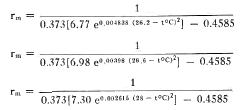Crossref Citations
This article has been cited by the following publications. This list is generated based on data provided by
Crossref.
Mackauer, M.
1973.
The population growth of the pea aphid biotype R1 on broad bean and pea (Homoptera: Aphididae).
Zeitschrift für Angewandte Entomologie,
Vol. 74,
Issue. 1-4,
p.
343.
Hoffmann, Klaus-Hubert
1974.
Wirkung von konstanten und tagesperiodisch alternierenden Temperaturen auf Lebensdauer, Nahrungsverwertung und Fertilit�t adulter Gryllus bimaculatus.
Oecologia,
Vol. 17,
Issue. 1,
p.
39.
Mackay, Patricia A.
and
Wellington, W. G.
1975.
A COMPARISON OF THE REPRODUCTIVE PATTERNS OF APTEROUS AND ALATE VIRGINOPAROUS ACYRTHOSIPHON PISUM (HOMOPTERA: APHIDIDAE).
The Canadian Entomologist,
Vol. 107,
Issue. 11,
p.
1161.
Welbers, P.
1975.
Der Einflu� von tagesperiodischen Wechseltemperaturen bei der Motte Pectinophora.
Oecologia,
Vol. 21,
Issue. 1,
p.
31.
Wetzel, Theo
and
Freier, Bernd
1975.
Kenntnis der Vermehrungspotenz und des Massenwechsels von Getreideblattläusen als Voraussetzung zur Prognose und gezielten Bekämpfung.
Archives Of Phytopathology And Plant Protection,
Vol. 11,
Issue. 2,
p.
133.
Roux, A. L.
1975.
Température stable et température fluctuante. II. Etude comparative de leurs effets sur la durée d'intermue de Gammaridae femelles.
SIL Proceedings, 1922-2010,
Vol. 19,
Issue. 4,
p.
3014.
Pattee, E.
1975.
Température stable et température fluctuante. I. Etude comparative de leurs effets sur le développement de certaines Planaires.
SIL Proceedings, 1922-2010,
Vol. 19,
Issue. 4,
p.
2795.
Campbell, A.
and
Mackauer, M.
1977.
THERMAL CONSTANTS FOR DEVELOPMENT OF THE PEA APHID (HOMOPTERA: APHIDIDAE) AND SOME OF ITS PARASITES.
The Canadian Entomologist,
Vol. 107,
Issue. 4,
p.
419.
Campbell, A.
and
Mackauer, M.
1977.
REPRODUCTION AND POPULATION GROWTH OF THE PEA APHID (HOMOPTERA: APHIDIDAE) UNDER LABORATORY AND FIELD CONDITIONS.
The Canadian Entomologist,
Vol. 109,
Issue. 2,
p.
277.
Barlow, C. A.
Randolph, Polley Ann
and
Randolph, J. C.
1977.
EFFECTS OF PEA APHIDS,ACYRTHOSIPHON PISUM(HOMOPTERA: APHIDIDAE), ON GROWTH AND PRODUCTIVITY OF PEA PLANTS,PISUM SATIVUM.
The Canadian Entomologist,
Vol. 109,
Issue. 11,
p.
1491.
Keen, Robert
and
Parker, David L.
1979.
Determining expected duration of development under conditions of alternating temperatures.
Journal of Theoretical Biology,
Vol. 81,
Issue. 3,
p.
599.
Bradshaw, William E.
1980.
Thermoperiodism and the thermal environment of the pitcher-plant mosquito, Wyeomyia smithii.
Oecologia,
Vol. 46,
Issue. 1,
p.
13.
Mills, N. J.
1981.
The estimation of mean duration from stage frequency data.
Oecologia,
Vol. 51,
Issue. 2,
p.
206.
Frazer, B. D.
and
Gill, B.
1981.
AGE, FECUNDITY, WEIGHT, AND THE INTRINSIC RATE OF INCREASE OF THE LUPINE APHID MACROSIPHUM ALBIFRONS (HOMOPTERA: APHIDIDAE).
The Canadian Entomologist,
Vol. 113,
Issue. 8,
p.
739.
Tsuda, Yoshio
1982.
Reproductive strategy of insects as adaptation to temporally varying environments.
Population Ecology,
Vol. 24,
Issue. 2,
p.
388.
LYKOURESSIS, D.
1984.
A comparative study of different aphid population parameters in assessing resistance in cereals.
Zeitschrift für Angewandte Entomologie,
Vol. 97,
Issue. 1-5,
p.
77.
Gutierrez, A. P.
Baumgaertner, J. U.
and
Summers, C. G.
1984.
MULTITROPHIC MODELS OF PREDATOR–PREY ENERGETICS: III. A CASE STUDY IN AN ALFALFA ECOSYSTEM.
The Canadian Entomologist,
Vol. 116,
Issue. 7,
p.
950.
BIRCH, N.
and
WRATTEN, S. D.
1984.
Patterns of aphid resistance in the genus Vicia.
Annals of Applied Biology,
Vol. 104,
Issue. 2,
p.
327.
LYKOURESSIS, D. P.
1985.
Temperature requirements of Sitobion avenae (F.) necessary for ecological studies, by assessing methods for the estimation of instar duration.
Zeitschrift für Angewandte Entomologie,
Vol. 100,
Issue. 1-5,
p.
479.
DOUGLAS, J. A.
1986.
The production and utilization of lucerne in New Zealand.
Grass and Forage Science,
Vol. 41,
Issue. 2,
p.
81.






